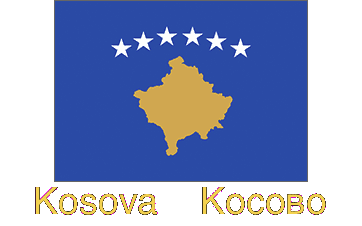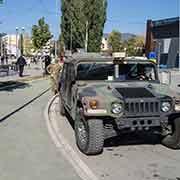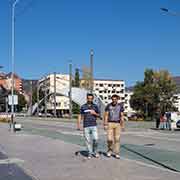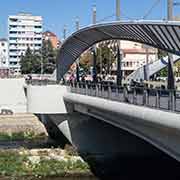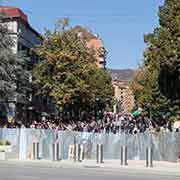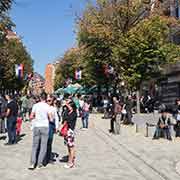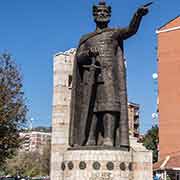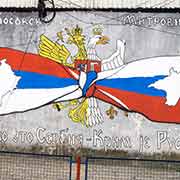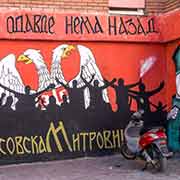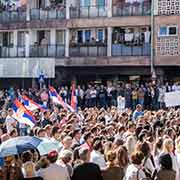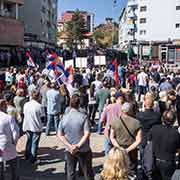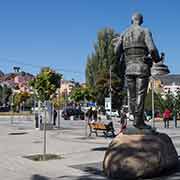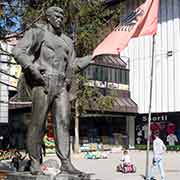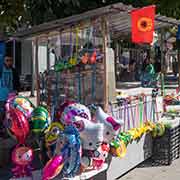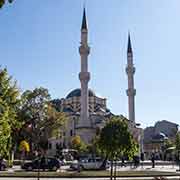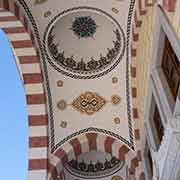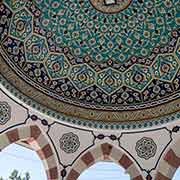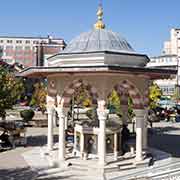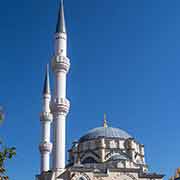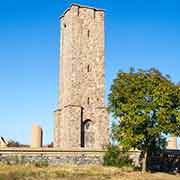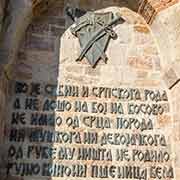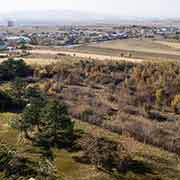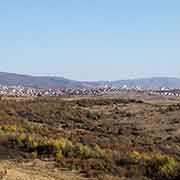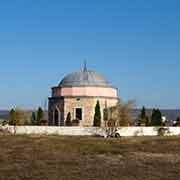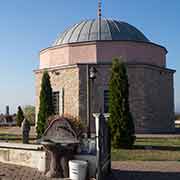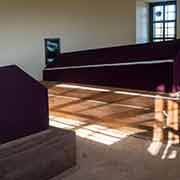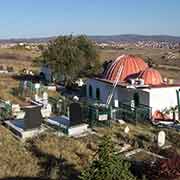Photos of Mitrovica and Gazimestan, Kosovo
Mitrovica and Gazimestan
Mitrovica (or Mitrovicë in a sentence with a preposition like “to”, “in” or “from Mitrovica”) is in northern Kosovo, on the banks of the Ibar and Sitnica rivers; the Ibar bridge separates the Albanian from the Serb population who call the city Kosovska Mitrovica.
you may then send it as a postcard if you wish.
The city is one of the oldest known settlements in Kosovo; it was probably named after the Byzantine church of Saint Demetrius, built in the 8th century just north of where the present city. Called Dimitrovica, it became Mitrovica under the Ottomans. It became "Titova Mitrovica" (Mitrovica e Titos in Albanian) after the death of the Yugoslav president Josip Broz Tito in 1980 but reverted to its old name in 1991.
Mitrovica was severely affected by the Kosovo war in 1999. Almost all Roma and Serbs living on the south bank of the Ibar river relocated to the north. The city became the focus of ethnic clashes between the Albanian and Serbian communities, and the bridge had armed guards preventing people from crossing. In 2004, when an Albanian boy drowned in the river, it triggered significant ethnic violence (it was alleged, without proof, that Serbians had chased him into the river). There was rioting with gunfire in which people were killed and injured.
After Kosovo declared independence from Serbia on 17 February 2008, tensions rose considerably. Kosovo Serb police officers no longer took orders from Albanian authorities, and Serb protesters prevented ethnic Albanian court employees from crossing the river. UN police seized the courthouse using tear gas and wounding some Serbs, but after more violence against them, they withdrew from North Mitrovica. Since 2013, however, things have calmed, but there are still UN KFOR troops and vehicles on the south bank of the river near the bridge, but it is possible to cross without trouble. However, there is a big contrast between the two halves. North Mitrovica (called Kosovska Mitrovica by the Serbs), is festooned with Serbian flags, posters, and symbols; demonstrations take place calling for “Serbian rights”. On the south bank, it is all Albanian flags, with statues of KLA fighters (who fought the Serbs) and a large new mosque.
Thirty-five kilometres southeast of Mitrovica (and about five kilometres northwest of Prishtina) is the Gazimestan monument. It commemorates the Battle of Kosovo that took place in 1389 when Ottoman forces defeated the Serbs. The monument, about 6-7 kilometres southeast of the actual battlefield, was built in 1953 in the shape of a medieval tower. It was here that on 28 June 1989 the then Yugoslav president Slobodan Milošević delivered a speech to a crowd of around a million mostly Serb people. He glorified Serbian nationalism and shortly afterward drastically reduced Kosovo's special autonomous status within Serbia. It started the cultural oppression of the ethnic Albanian population and, some say, lead to the wars and breakup of Yugoslavia. After the Kosovo War of 1999 and subsequent ethnic tensions, the monument has been guarded, since 2010 by the Kosovo Police.


